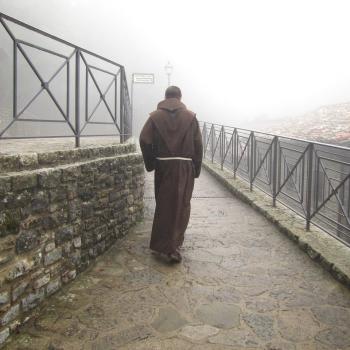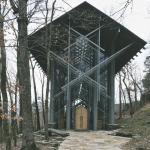The first decade of the 2000’s was a pivotal one for American Christianity, with a palpable sense that the culture was rapidly shifting all around us. And this sense triggered a flood of thinking and writing on how the church must lean into that shift, especially in the ways we do church.
Words like emerging, missional, and incarnational were used to describe the new thing that seemed to be happening. And all of these held an interesting attribute in common: a strong move away from the traditional church, especially the traditional idea that church must always equal a building.
Smaller, more organic styles of doing church are certainly not new; in countries that are hostile to Christian faith house churches are the norm, and even in the West many simply prefer to cut out the building overhead and the crowds and just do house church. I grew up experiencing both traditional (if more contemporary) church settings and house church settings. And when I decided to plant a church in 2008, in the thick of all this shifting and change, these experiences informed my particular vision on how to do missional and incarnational ministry in our city.
For one thing, I didn’t believe that the traditional idea was all bad. That is, my experience in house churches taught me that some organization and structure is necessary and preferred, and the anchor point of a weekly gathered worship service in a non-home building was extremely important to the life and rhythm of a local church. Yet, the organizationally rigid and overly programmed status quo of American church life, contemporary or otherwise, was not helpful. As the culture around us questioned the basis of authority in all aspects of life, an institutionalized and authoritarian church expression was going to become a counterproductive, and ultimately fatal, way of doing church in the future. And the emerging statistics about the rising Nones (unaffiliated/unchurched) and Dones (dechurched) only confirmed this conviction.
When my own church plant, and the missional/incarnational experiment it represented, came to an end in 2012, I was forced to acknowledge that these new ideas about how to do church needed to come into greater maturity. Namely, instead of just being about the form – how we do church – they need to define the substance – what the church is. These new identifiers needed to be integrated into our entire vision of the church and Christian faith in the U.S.
And that’s why I believe that the future of the church is both anchored and everywhere.
It is anchored in that any vision for the future of the church in the U.S., and the West in general, must have its roots in the Great Tradition – the practices and perspectives that have defined our faith since its inception. This means that not all of our organization and structure is bad; to the contrary, much of it is good and needed and capable of bringing stability to a revitalized church! The sense of identity that comes from our denominational structure and our religious practices, especially in weekly worship, is critical to the future of Christian faith. We simply won’t be able to sustain without that powerful anchor.
And yet, the future of the church is also everywhere in that over-structuring and over-programming the mission of the church is still a surefire way to restrict its movement and choke out any of its new life. The Rethink Church initiative in my own denomination sums it up perfectly when it proclaims, “We think church is more than a place to go. We think church can happen anywhere.” Yes! Exactly! And that’s because church is not synonymous with a building, even the necessary building where weekly worship happens. Church is the people, the congregation of gifted and called followers of Jesus, who overflow in the missional service of loving others with the love of Jesus each and everyday. Church is the incarnational presence of those people who inhabit their neighborhoods and jobs and families and hobbies and passion projects with the very presence of God in Christ. By releasing the programmatic grip, local churches can free up their congregations to become who they are truly called to be, for the sake of others, for the sake of the world. The church can truly be “sent” into the mission of God, everywhere that mission is taking place!
And it is worth noting that even the anchored weekly worship gathering doesn’t need to happen in a traditional-looking space. “Third places” like movie theaters, cafes, warehouses, clubs, and bars can be repurposed for anchored worship in new and life-giving ways. The rooted religious practices taking place there have the same potency (and perhaps even more potency because of their real-life familiarity) to send the people out to be the church “anywhere” they may go.
This second decade of the 21st century is, I think, offering American Christians the opportunity to mature and integrate some of the discoveries of the last decade more deeply into our DNA. To make substantial changes and offer significant freedoms that have been lacking in decades past. To see a fresh wind of the revitalizing Spirit blow, through the anchoring of our identity and the liberating of our mission.
All for the sake of God’s work to renew and restore the people and the creation that he loves, in every nook, cranny, and neighborhood.
This post is part of a Patheos symposium on “Nontraditional Church: Trends for the Future” sponsored by Regal Theatre Church.

















